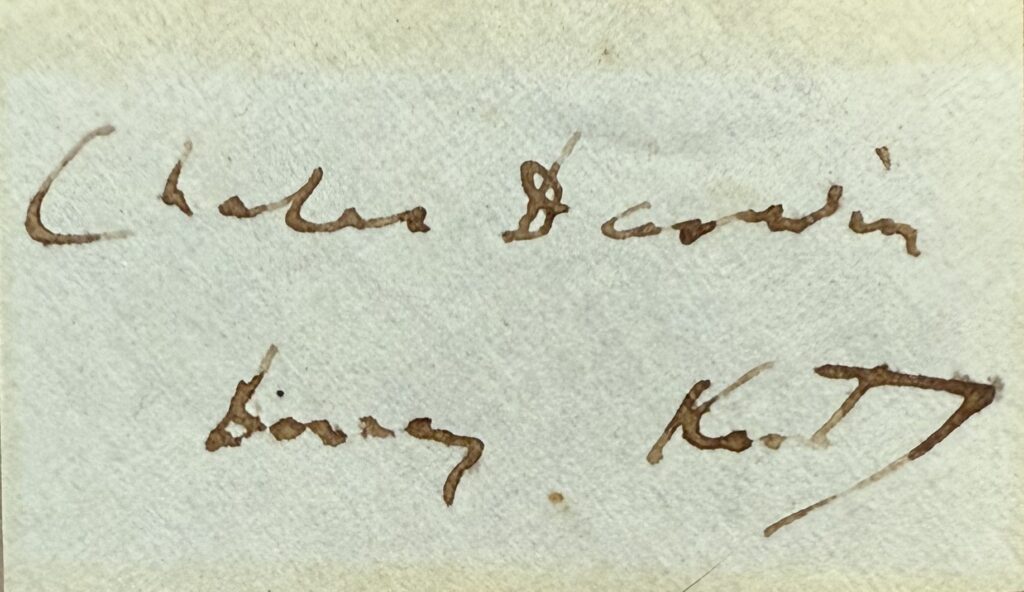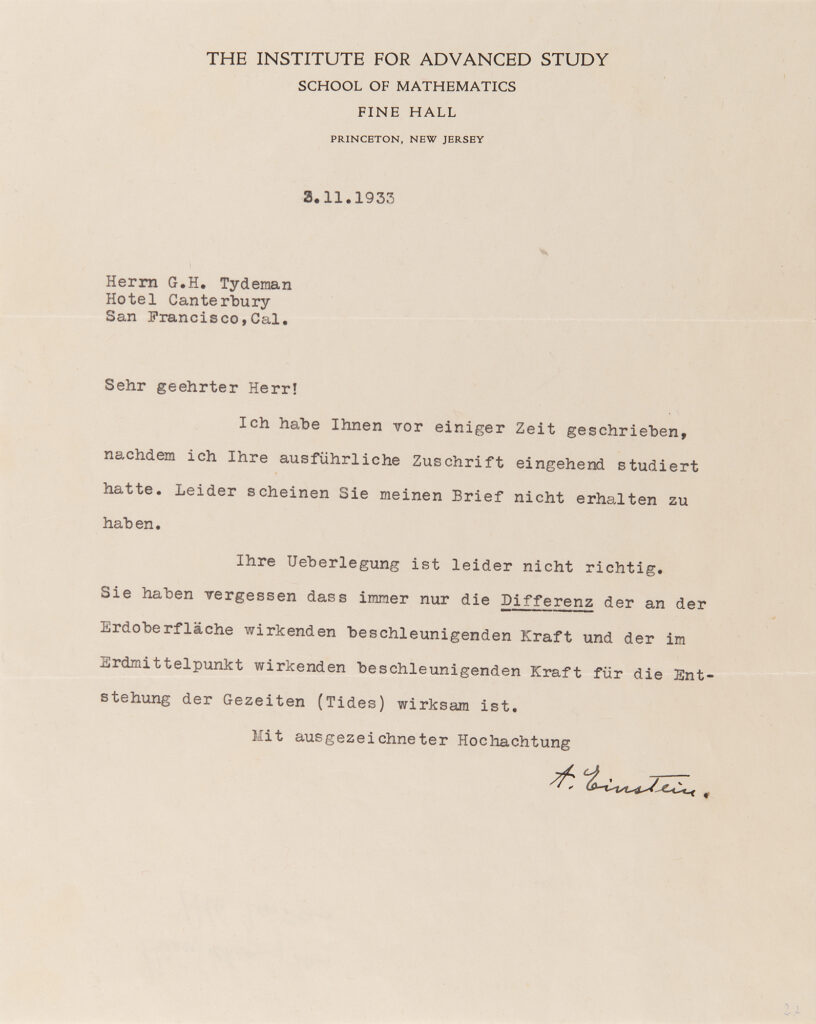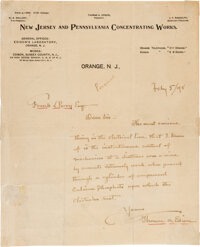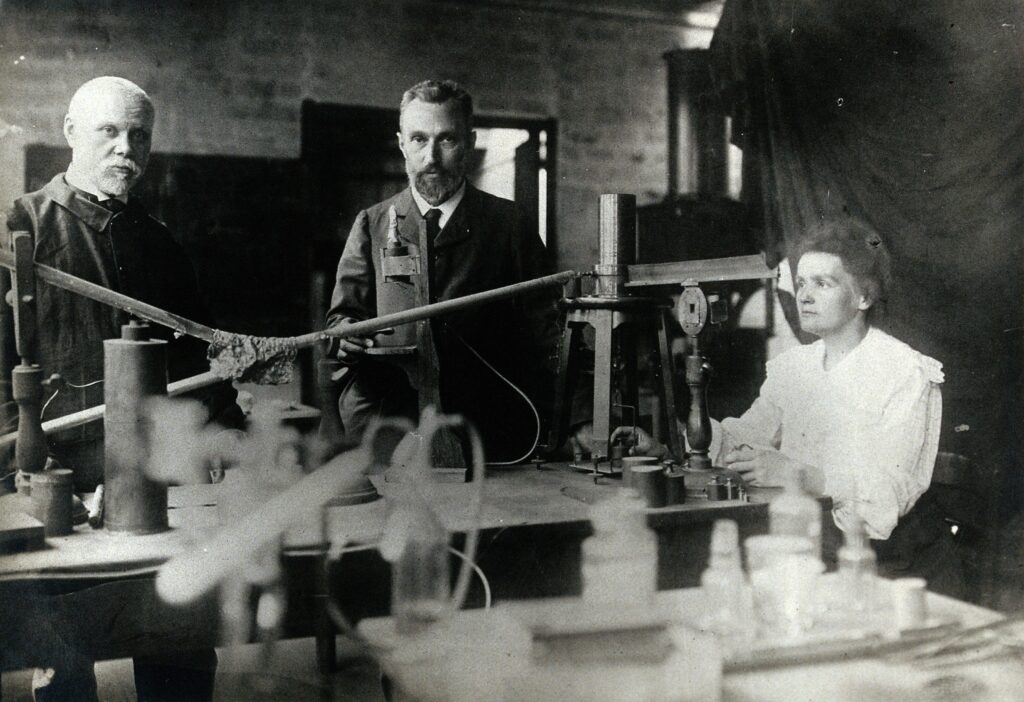Choice signature of the celebrated evolutionary biologist, Charles Darwin
Superlative, bold ink signature, “Charles Darwin, Down, Kent” on an off-white 2 x 1.5 slip, handsomely suede-matted with a portrait. In fine condition. A marvelous display boasting a choice Charles Darwin autograph, especially rare as he signs his full name and not the more typical “C. Darwin”.
Also unusual as Darwin references “Down Kent”. Down House, in the parish of Kent, is best known as the home of Charles Darwin. Darwin lived there with his family for 40 years, worked on his revolutionary theories, and wrote “On the Origin of Species” there – the book which shook the Victorian world and has influenced scientific thinking ever since.
Charles Robert Darwin (12 February 1809 – 19 April 1882) was an English naturalist, geologist, and biologist, widely known for his contributions to evolutionary biology. His proposition that all species of life have descended from a common ancestor is now generally accepted and considered a fundamental scientific concept. In a joint presentation with Alfred Russel Wallace, he introduced his scientific theory that this branching pattern of evolution resulted from a process he called natural selection, in which the struggle for existence has a similar effect to the artificial selection involved in selective breeding. Darwin has been described as one of the most influential figures in human history and was honoured by burial in Westminster Abbey.
Darwin’s early interest in nature led him to neglect his medical education at the University of Edinburgh; instead, he helped Grant to investigate marine invertebrates. His studies at the University of Cambridge’s Christ’s College from 1828 to 1831 encouraged his passion for natural science. However, it was his five-year voyage on HMS Beagle from 1831 to 1836 that truly established Darwin as an eminent geologist. The observations and theories he developed during his voyage supported Charles Lyell’s concept of gradual geological change. Publication of his journal of the voyage made Darwin famous as a popular author.
Puzzled by the geographical distribution of wildlife and fossils he collected on the voyage, Darwin began detailed investigations and, in 1838, devised his theory of natural selection. Darwin’s work established evolutionary descent with modification as the dominant scientific explanation of natural diversification. In 1871, he examined human evolution and sexual selection in The Descent of Man, and Selection in Relation to Sex, followed by The Expression of the Emotions in Man and Animals (1872).
Darwin published his theory of evolution with compelling evidence in his 1859 book On the Origin of Species. By the 1870s, the scientific community and a majority of the educated public had accepted evolution as a fact. However, many initially favored competing explanations that gave only a minor role to natural selection. It was not until the emergence of the modern evolutionary synthesis from the 1930s to the 1950s that a broad consensus developed in which natural selection was the basic mechanism of evolution. Darwin’s scientific discovery is the unifying theory of the life sciences, explaining the diversity of life.




